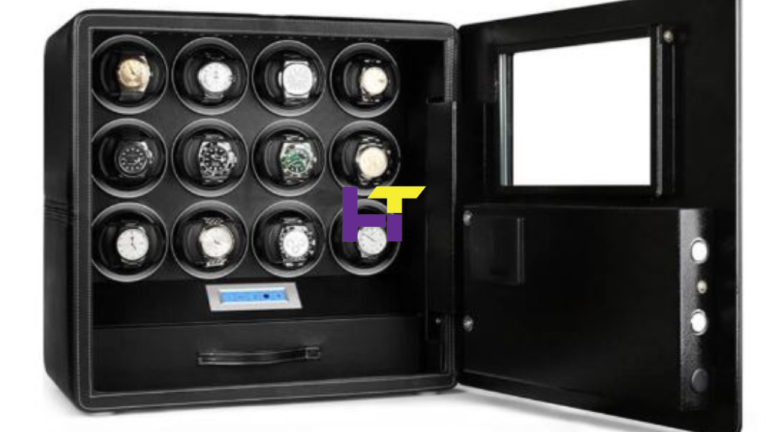Exploring the Role of Visual Testing in UX/UI Design

Visual elements are crucial in UI/ UX design for captivating the user’s attention and communicating brand identity. Visual elements such as typography, colors, layout, and graphics considerably shape users’ perceptions and interactions with digital products.
Automation testing is crucial in developing and designing to ensure a delightful and seamless user experience. QA specialists play a critical role in confirming that software products meet the standards of consistency, functionality, and visual appeal.
This article will delve into the inseparable bond between UI/UX design and QA testing, highlighting how their collaboration, counting automation testing, improves the overall success of a software application.
What is Visual Testing?
Visual testing, also termed visual UI testing, is a creative approach to check the visual appearances, user interface, GUI (graphical user interface), and behavior of the software apps. It ensures correctness and consistency across diverse screen sizes, devices, and browsers. Unlike functional testing, which focuses on confirming the product’s functionality, visual testing targets its visual aesthetics and appearance. Additionally, visual tests also verify the diverse behaviors of webpages, encompassing components like buttons, labels, content, navigation, and other functionalities.
This assists the software developers in providing a combined experience for their users. They can rapidly determine any error or discrepancies in the visuals of the web apps or websites by scrutinizing expected and rendered outcomes. Also, with this, they can confirm that their software apps meet usability standards and are optimized for diverse platforms.

With visual testing, QA testers and developers ensure that the developed software apps give a uniform user experience to all end users regardless of browsers or device and their versions. However, many software professionals agree that functional testing is enough to detect visual bugs.
Core Differences: Visual and Functional Testing
Visual testing chiefly focuses on the behavior and appearance of the user interface, while functional testing centers on evaluating the functionality of the software app. Functional tests don’t capture visual defects like pixel-to-pixel comparison, alignment, rendering, layout, font changes, overlap, and responsive layout issues. Most software testing is designed to authenticate that various aspects of the software function as intended. However, these tests often neglect the crucial visual elements from the users’ viewpoint.
| Visual Testing | Functional Testing |
| It focuses on the behavior and appearance of the user interface. | It focuses on testing the functionality of the software app. |
| It aims to authenticate the consistent and accurate display of visual components across OS, devices, and browsers. | It seeks to authenticate that functionalities and features work as intended. |
Why Require Visual Testing?
Visual testing is executed due to recurrent visual errors that are often ignored. It lets you spot bugs not identified by other User Interface testing quickly. Some vital rationales for visual tests encompass:
- Validating that the developed software app’s User Interface appears as proposed to users and usability standards.
- It finds user interface variations that are not detected in baseline snapshots.
- It assesses flaws in the visual bugs, User Interface, and design inconsistencies that might impact the user experience.
- Allowing testers or quality analysts to evaluate test cases simply visually.
- It generates dedicated visual test cases that include functional aspects.
The Significance of Visual Testing in UX/UI Design
Visual testing is critical in developing and designing to ensure a delightful and seamless user experience.
- Ensuring Design Constancy: Visual testing confirms that the design components remain consistent across diverse devices, platforms, and screen sizes. Consistency in design reinforces brand uniqueness and improves usability and user familiarity. By authenticating that the visual components maintain uniformity across numerous environments, visual testing aids developers and designers deliver polished and cohesive digital experiences.
- Validating Responsive Design: With the introduction of diverse mobile gadgets, responsive design has become arduous in UX/UI design. Visual testing validates that the UI elements can smoothly adapt to diverse orientations & viewport sizes, ensuring that the web product remains functional & accessible across the suite of devices. By authenticating responsive design principles, visual testing fosters user engagement and contributes to a positive user experience and retention.
- Identifying Visual Defects: Visual testing also helps detect visual flaws that affect the aesthetics and usability of the web product. Visual testing allows developers to detect and fix them early in the development procedure, whether in color intricacies, alignment issues, layout imperfections, or graphical artifacts. By confirming visual integrity and pixel-perfect precision, visual testing improves the overall polish and quality of the digital product.
- Optimizing Performance: Visual components can affect the performance of a digital product, particularly on slow network connections or low-end devices. Visual testing validates that the User Interface performs optimally and remains responsive under different conditions, confirming seamless interactions and fast loading times. Experts can deliver an efficient user experience despite the user’s device by optimizing functionality and performance via visual testing.
- Better User Satisfaction: A visually appealing and better UI improves user satisfaction, fostering positive brand perceptions. Visual testing improves a positive user experience by enhancing the digital product’s looks and visual appeal. By delivering visually stunning, functional, and robust digital experiences, designers and developers can amuse users, drive user satisfaction, and distinguish their products in a competitive market landscape.
Integrating Visual Testing into the Design Process
- Early Prototyping: Incorporate visual testing during the prototyping phase to validate design concepts and spot visual flaws before proceeding to full-scale development.
- Iterative Design: Conduct visual tests iteratively throughout the design procedure to ensure that design alterations and updates don’t introduce unplanned visual regressions or defects.
- Collaborative Approach: Foster teamwork among developers, designers, and QA engineers to efficiently mitigate visual glitches and maintain design consistency throughout the product development lifecycle.
- Automation: Leverage automated visual test frameworks and tools to streamline the test process, increase efficiency, and confirm consistent visual quality across releases.
Leverage LambdaTest for Visual Test Excellence
As developers and designers strive to generate visually functionally and stunning robust digital products, the significance of visual testing can’t be overstated. But, to completely harness the profits of visual testing, QA teams need a comprehensive and robust test solution by moving towards a cloud-based platform like LambdaTest.
LambdaTest is an AI-powered test orchestration and execution platform that lets you run manual and automated tests at scale with over 3000+ real devices, browsers and OS combinations.
What sets LambdaTest apart is its capacity to facilitate automated visual testing using diverse testing frameworks like Storybook, Cypress, Selenium, Playwright, and Appium across multiple programming languages, including Node.js, Java, and C#. Besides, LambdaTest’s parallel testing capabilities considerably reduce test implementation time, and its smooth integration with several CI/CD tools makes it a standout choice for accomplishing flawless software apps with impeccable visual characteristics.
- Cross-Browser Compatibility: LambdaTest’s cloud-centric infrastructure empowers developers and designers to test their designs across an extensive suite of browsers and versions, guaranteeing consistent functionality and rendering.
- Responsive Design Validation: With LambdaTest, QA teams can effortlessly validate the responsiveness of their designs across different devices, screen sizes, and orientations, ensuring a smooth user experience on tablets, desktops, and smartphones.
- Efficient Regression Testing: LambdaTest’s visual regression testing competencies allow teams to detect and address visual regressions early in the software development cycle, preserving design integrity and preventing design inconsistencies.
- Collaborative Testing: LambdaTest fosters collaboration between developers, designers, and QA testers, facilitating knowledge and communication sharing to address visual issues efficiently and effectively.
Conclusion
In short, visual testing is essential in ensuring the competitiveness and success of digital products. By incorporating visual testing into the UX/UI design procedure, developers and designers can deliver functionally robust and visually stunning products that resonate with consumers and drive business success. By embracing visual testing with LambdaTest, teams can elevate their design procedure, mitigate visual flaws, and deliver exceptional user experiences that captivate and delight consumers. Embrace LambdaTest now and embark on a journey towards UX/UI design brilliance!
Read More: Visual Testing for Progressive Web Apps (PWAs).






